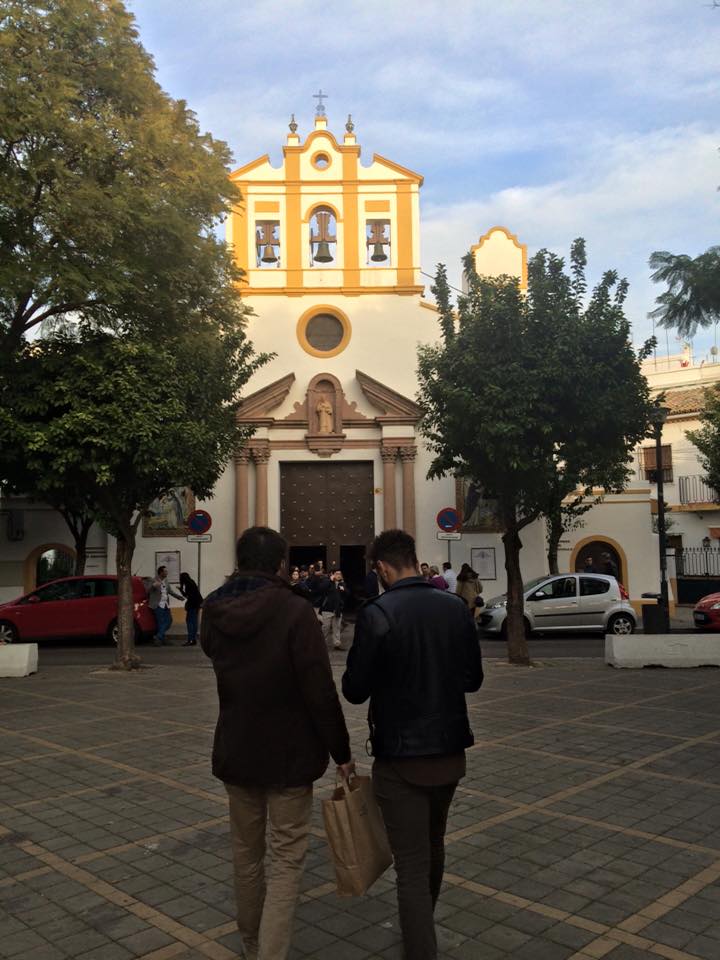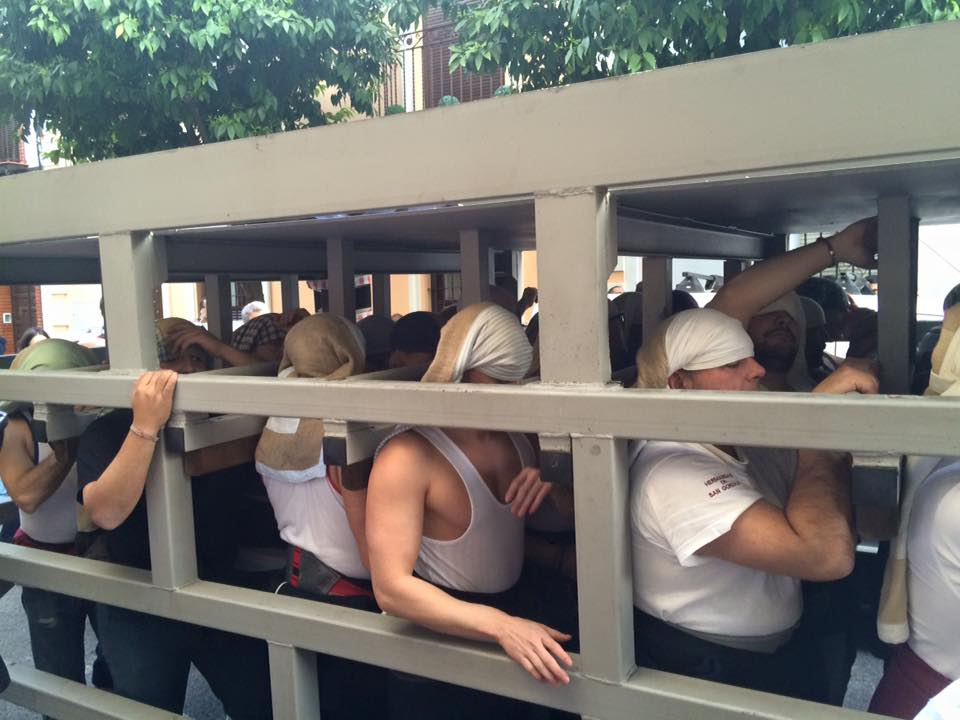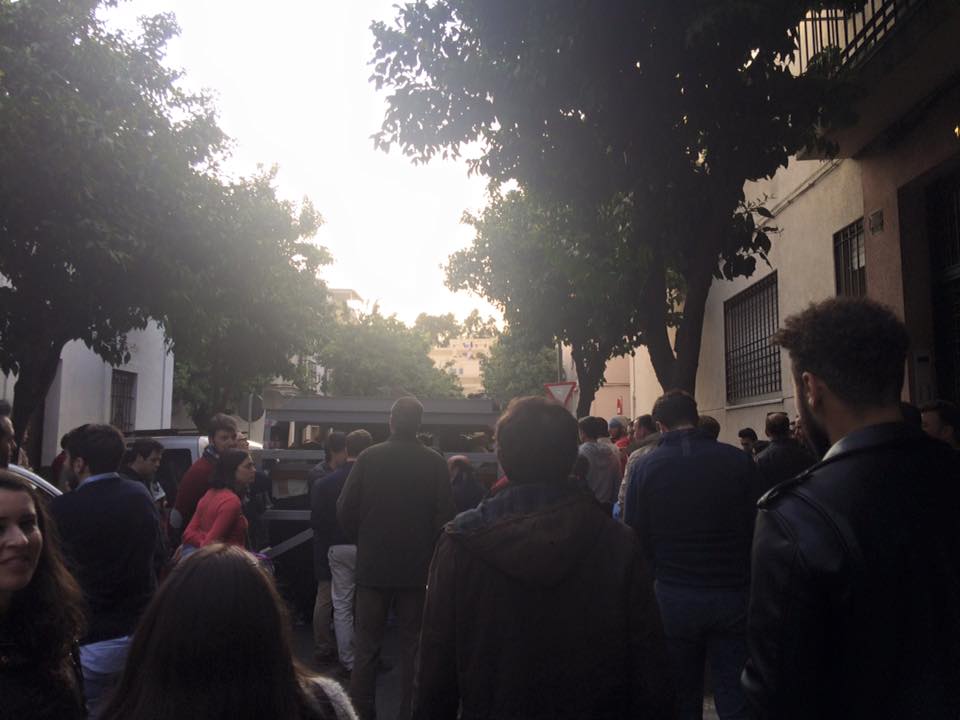For those who need an introduction, Semana Santa or the Holy week is a 8-day lasting festivity to celebrate what we call Easter. During this time the city streets are almost constantly filled with processions of richly filled floats with Jesus and Mary statues, accompanied by Nazarenos (see picture) and shrill brass bands.
The celebrations take place all over Spain, but Sevilla is the most popular city to experience the Semana Santa. This year, it will take place from the 20-27 march.
Hotels and alternative options like Airbnb are likely to be fully booked by this time, but who knows, you might get lucky and still find a place to sleep in order to experience this unique event.
Semana Santa is celebrated with long lasting traditions of which the reasons might be hard to grasp for the outside world. That is why we got ourselves a personal guide to get an inside look on these famous traditions. We were curious as to what’s behind these processions, the work that goes into it and what still motivates thousands of people to carry these heavy floats around the city year after year.
We got to witness a practice moment and got all our questions answered by our local expert Carlitos. He grew up with these traditions and has been participating in the processions ever since he turned 18.

How do you prepare for Semana Santa ?
The trials start 2 months before the Semana Santa, we practice it 3 to 5 times to get used to the weight and to get the rhythm and instructions of the leader of the Paso. Most of the time, it is accompanied with music, with a steady rate, played by a 'Banda' (Band) of their church. But if there is no music, people have to know when to move, or stop, and how to move forward. And that doesn’t go without saying.
What is 'The Paso' ?
Those are the wooden floats they carry around. In general, six men are carrying the floats in the front and in the back and there’s eight men carrying it on the side, in total this particular float is carried by 48 people. During the trials it is still not decorated, it will be completely adorned with flowers and full of colours, images, not to mention de Religious Image in the front (Jesus, Marie, etc..) related to their church. Moreover, the costumes are linked to this 'Image'. The overall image is in fact arranged by the same man : El 'Prioste'.
It must be really heavy if 48 people are needed to carry it, how much weight is it ?
It defintely is! Around 2000 kilo are divided between these 48 men, a quick calculation shows us that this is around 42 kilo for every man to carry on their neck. The Paso can weigh from 1500 to 2500 kilos. So every 30 to 40 minutes they switch the 48 other men who carry the float to keep it bearable for the Costaleros, the name of the carriers of the floats.
To spare their neck, the Costaleros are wearing “costales” which are made out of bags for coffee and a “morcilla” a sausage shaped pillow. (the literal translation of morcilla is blood sausage, where these kind of pillows are named after).

We guess that those trials have all their importance for the smooth progress of the Semana Santa.
First, because of the big weight on their shoulders, literally and figuratively speaking, it is important to train well and be in good shape to do this. I personally usually train 3 times a week, but 4-5 times in the week before the Semana Santa.
But to be honest, you will find any kind of man wearing the Paso. What matters is the mind, and the fraternity between people. It really gives you strength knowing that you're not the only one to suffer and if you trip, someone will be next to you to help you out. This is one of the numerous meaning of 'Hermandades', our Brotherhoods we are part of.
People are coming to witness the practice and follow the trial-procession through the streets of their own neighbourhood. The people do it to show support, but also for the social aspect of it. It is such a big social event. This is eventually what drives people to participate in Semana Santa, to have a feeling of community and a sence of fellowship. Isn't that sence of fellowship what we can find in your Brotherhoods?

It is all the meaning of it ! You're part an Hermandad for life, not only during one week a year. First, every Hermandad comes from a neighbourhood or a 'zone'. So people are more intimate with their own church.
There are several processions a year, and also events within our church. Because brotherhoods are linked to a church. Each church has its own Hermandad, or 2, with which they participate in the processions.
Getting in a certain Hermandad usually happens during the childhood, often because it is decided by the father. However, whoever wants to, can also choose himself to join the brotherhood. Every Hermandad has its own day where they come together for practicing and going to church.
People go to kiss the feet of Jesus and to get their picture taken in church.

The Hermandad of our guide is El Salvador. The Costaleros mostly join the Hermandad of their neighbourhood. However, there are more than 50 different brotherhoods with each their own church. Needless to say that sometimes the neighbourhoods intersect each other, so it’s not strictly determined by neighbourhood but also simply by the legacy of their family.
Carlitos has been doing this since he was 18, before the age of 18 it is not allowed to join the processions as a Costalero, although it was less strict in the past.
On La Semana Santa he told us that:
For us it was a very interesting experience to get a behind the scenes look on this huge event.
Get in contact with us for more information about Sevilla during the Semana Santa and experience it first row.
Our tours take place in the morning and so it is still possible to make our way through the city before the processions start.